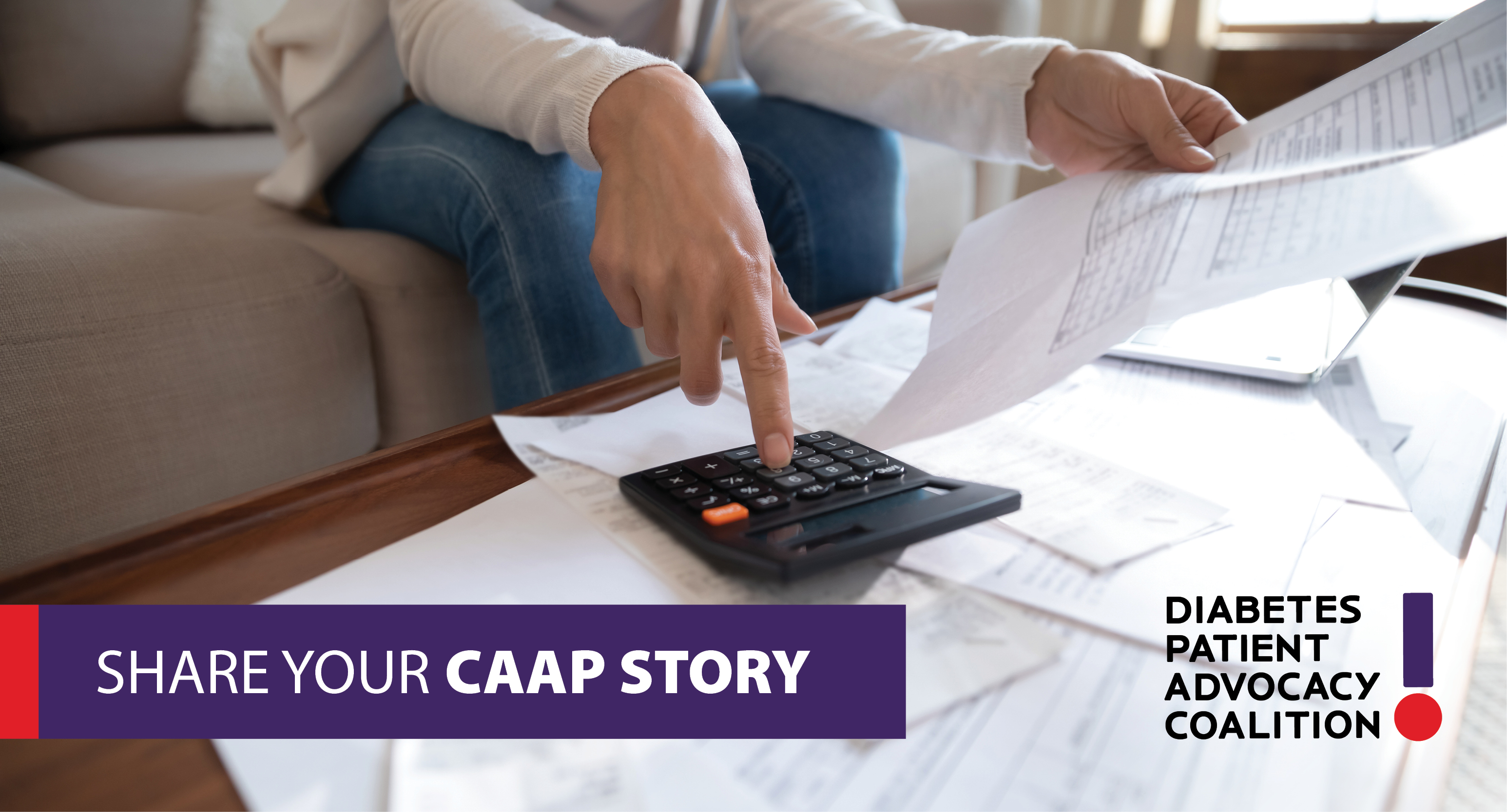DPAC (Diabetes Patient Advocacy Coalition) is seeking patient stories for individuals who have been negatively impacted by a Copay Assistance Accumulator Program (CAAP) included in their insurance plan.
A CAAP is where a manufacturer provides a coupon to a patient to enable them to purchase a drug at retail for a discounted amount; however, the patient does not get credit towards their deductible or out of pocket maximum for the amount of the coupon by their insurance plan. The result is that the plan gets the deductible paid twice – once by the patient and once by the manufacturer through the coupon – and patients are faced with paying full list prices after the coupon expires until they meet their deductible, often making their medications unaffordable.
DPAC recently joined the Diabetes Leadership Council (DLC) and the HIV-Hepatitis Policy Institute in a lawsuit against the federal government over the ruling by the Department of Health and Human Services (HHS) that allows pharmacy benefits managers and insurers to divert the value of manufacturer assistance away from patients to insurance plans. We believe that ruling violates the Affordable Care Act’s (ACA) definition of cost-sharing which includes any expenditure required of an individual. These costs are required of the individual but are made possible by the manufacturer assistance and not the plan. The HHS rule also contradicts their own definition of patient cost-sharing which includes any expenditure required by or on behalf of an enrollee.
We need to gather as many patient stories as possible from individuals who have been harmed by a CAAP as part of an effort to show the real-life impact to patients of these unfair programs. Note that this does not need to involve an insulin or even a diabetes drug. It can be for any prescription drug where the patient used a manufacturer’s coupon but did not get credit for the coupon against their deductible or out-of-pocket maximum.
Some examples of being impacted by a CAAP are:
- The patient uses a copay card to purchase a medication, but does not see this purchase reflected on their statement that tells how close they are to meeting the deductible.
- The patient uses a coupon for a drug that would’ve cost $150 but only costs $20. When checking to see how close they are to meeting the $2,000 deductible, there is still $1980 left to pay instead of $1850.
- The patient has a $2500 deductible and takes a medication that costs $500 per month. The patient receives a coupon for the medication that gives a $400 discount for each refill. So the patient only pays $100 per month over 5 months, expecting to meet the deductible in May, 5 months into the year. In June, they learn they still owe $2,000 to meet the deductible because none of the coupon assistance counted toward it – only the $100 out-of-pocket payments.
Please let us know if you’ve experienced something like this by contacting [email protected] today. If this has impacted someone you know–please share this page! With your help, we have an opportunity to help vulnerable patients access life-sustaining and life-saving medications that they otherwise cannot afford.
If you’re unsure if this applies to you, please contact us and we’ll be happy to talk through it with you.
You can learn more about CAAPs by checking out DPAC’s Brown Bag Series replay!

